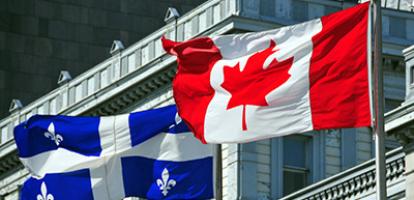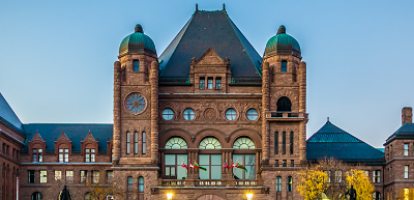From: Lawrence Herman
To: Concerned Canadians
Date: November 12, 2020
Re: Joe Biden’s Buy America Agenda
President-elect Joe Biden made it clear during the campaign that he would expand “Buy American” policies, preferences also much favoured, if only erratically applied, by Donald Trump.
We can expect these ideas to be pursued by the Biden administration in the coming years, with obvious impact on the range of projects open to Canadian bidders supplying the US market over the last several decades.
As reported by Inside US Trade, during the campaign Biden said:
“The federal government every year spent $600 billion just making sure that we have ships and planes, cars, trains, all the things the government lets contracts for. Well, I promise you this. Every single product, every single contract let will be only let to a company or a firm that makes it in America from beginning to end. Not a joke. It’s going to be used to buy American products, support American jobs.”
As noted by the publication, this could well run afoul of the Government Procurement Agreement (GPA), a plurilateral treaty first concluded in 1995 under the World Trade Organization umbrella, which applies only to WTO members who have signed and ratified it. While Donald Trump reduced US support at the WTO, Biden said he will reverse that and re-dedicate the US commitment to the WTO. So, what, in fact, does the GPA have to say about signatories’ obligations, including those of the United States?
In light of Biden’s campaign proposals, the issue is whether and to what extent the GPA allows for these new and large-scale Buy American measures.
While complicated because of different “bottom-up” commitments by different parties, the essence of the GPA is that signatories must allow foreign suppliers the non-discriminatory right to bid on projects (at the national and sub-national levels) by procuring entities listed in each member’s commitment schedule.
Those schedules vary from country to country, with many reservations and exclusions. In the case of the US, its exclusions list Buy American requirements for mass transit and highway projects under federal funding as well as federally funded airport projects. The US schedule also excludes procurements under “set-asides” for small and minority-owned businesses. At the sub-national level, only 37 US states are covered under the US commitments, subject to some exclusions here as well.
Canadian and third-country suppliers can only bid on those projects listed under the US schedule. Under the 1995 version of the GPA, Canada was excluded from bidding at the state level because Canada excluded the provinces in its own list.
In 2010, Canada and the US concluded a separate bilateral procurement agreement, outside the GPA, to settle several matters, including preferential measures applied by each government during the 2008-2009 financial crisis. The agreement gave Canadian bidders access to procurements by the 37 states that Canada had been excluded from bidding on, in return for US access to Canadian provincial procurements. As with the GPA, there were minimum value thresholds and certain procurements that were excluded in each country’s undertakings under this agreement.
The 2010 agreement was superseded by a revised (plurilateral) GPA concluded at the WTO in 2014, updating the original 1995 GPA, expanding its market-access commitments and revising certain rules to reflect modern procurement practices, such as conducting some of the procurement process online. The 2014 GPA folds in the terms of the 2010 Canada-US bilateral, thus “plurilateralizing” its commitments. As with the 1995 version, the issue is the extent to which the US can extend Buy American preferences without breaching its treaty commitments.
During the 2017-2018 NAFTA re-negotiations, Canada and the US agreed that all government procurement obligations would be governed under the 2014 GPA – that is, the benefits that accrue to Canadian suppliers to the US and vice versa would fall under the WTO’s umbrella. The result is that CUSMA only covers government procurements between the US and Mexico.
Going forward under the new order in Washington, Canadian suppliers need to be prepared. The revised GPA has wide doors through which the Biden administration could drive additional Buy American preferences and, arguably, not be offside WTO obligations. This point remains to be tested, however. When those preferences cross over the line into projects not clearly excluded, there could be WTO problems.
There is another factor at play here. Once Joe Biden is installed in the White House, the Trump administration’s blocking of appointments to the WTO Appellate Body will come to an end. Assuming the dispute-resolution system is then restored to operational status, it would open the door to Canada – or any other GPA party - launching a WTO complaint over Buy American measures that breach US treaty obligations.
Whether any of this comes to pass will depend on how aggressively the Biden administration pursues enlarged Buy American preferences. From what has been said, however, it looks like this could be an area of friction between the two countries, notwithstanding the Canadian cheers for the election result.
Lawrence Herman is a former Canadian diplomat who practices international trade law at Herman & Associates. He is also a senior fellow of the C.D. Howe Institute in Toronto.
To send a comment or leave feedback, click here.
The views expressed here are those of the author. The C.D. Howe Institute does not take corporate positions on policy matters.





